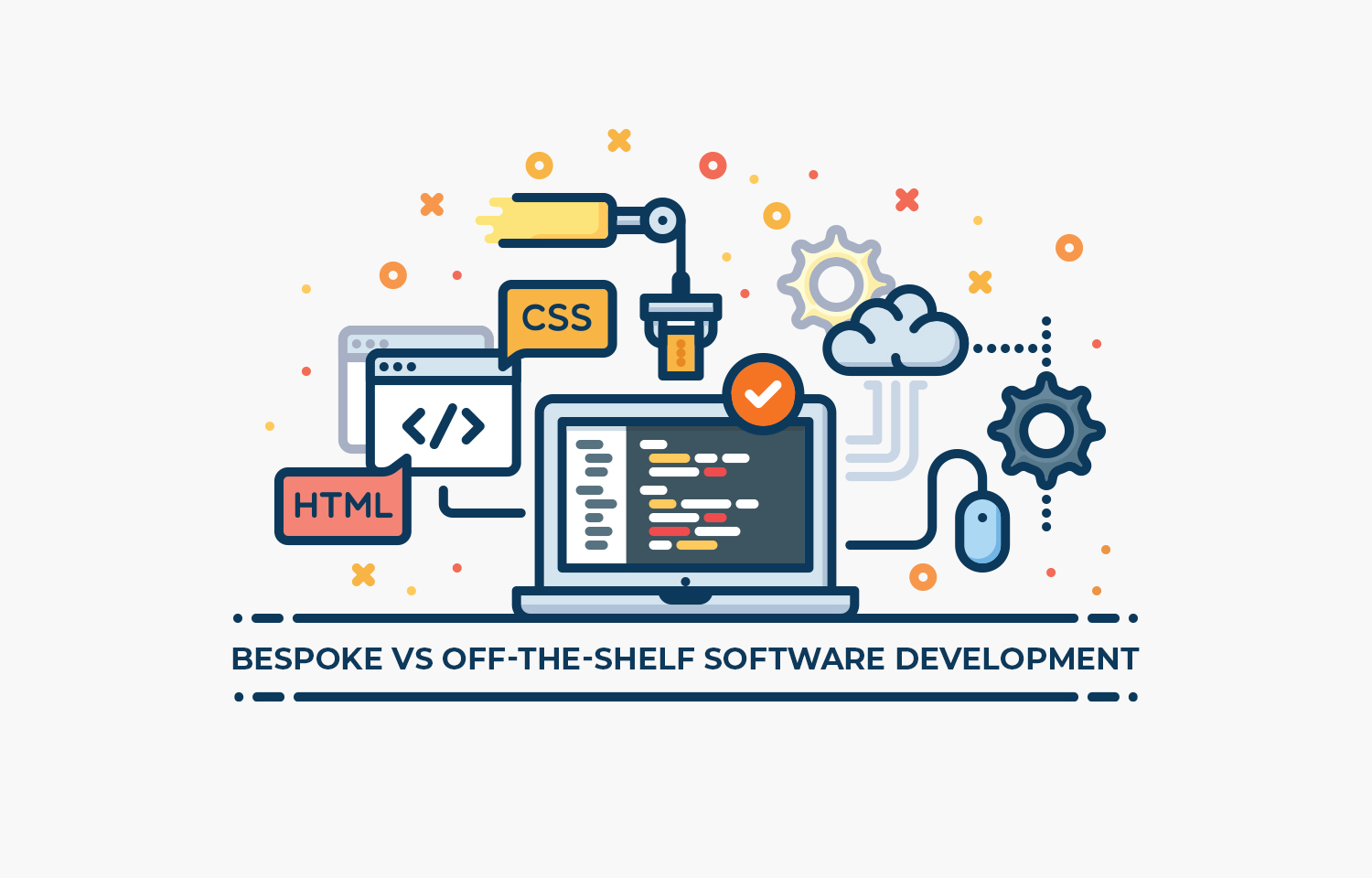
Bespoke vs Off-the-Shelf Software Development: Understanding the Differences
In an increasingly digitised world, software is the backbone of business. Software applications, tools, and platforms streamline workflows, enhance productivity, and make operations more efficient.
When choosing software solutions for your business, you have a basic choice between off-the-shelf software, or developing a bespoke solution for your needs. Each approach has its benefits and drawbacks, and the choice largely depends on three factors: suitability; economies of scale; and stability and longevity.
Suitability
Off-the-shelf software offers solutions to standard functional requirements such as ecommerce, accounting, project management, event management etc. These solutions typically offer a plethora of options which can be configured to your requirements, and a great deal of ‘standard functionality’, which may or may not be required. These solutions can be ideal for standard requirements and can get things up and running quickly and cheaply, but your business processes may need to be adapted to fit the software. The resulting systems may also include unused functionality, leading to a less intuitive interface, meaning that greater user training may be required, and best practices need to be established for how the software is used. If your business requirements grow and change over time, they may outgrow the solution, requiring a new solution to be sought, and the resulting pain of moving from one system to another.
By contrast, bespoke software is developed in response to a specific business requirement. The individual requirements are analysed alongside existing processes, workflows and standards, and the best possible solution is crafted. As business requirements grow and evolve, bespoke software can be modified and expanded to accommodate new features, capabilities, and workflow changes. Bespoke software can however be costly and time consuming to develop, and you don’t get anything for free – there is no ‘standard functionality’, only what has been developed to address the specific requirements.
The real world is of course not quite this black & white – bespoke software is often developed to address specific requirements, but can incorporate off-the-shelf solutions for standard functionality that needs to be included. This may mean use of off-the-shelf plugins or software libraries or integration with third-party services such as postal address finding and mapping interfaces, e-commerce platforms, payment gateways or AI services. The only thing to watch here is the increased requirement for maintenance which will be required to keep the bespoke solution compatible with the bought-in service.
Economies of Scale
Most off-the-shelf software applications and services are provided on a subscription model, with pricing based on the number of users and the features required, meaning the smaller the business, the lower the cost. The cost of developing bespoke software is however only really affected by the complexity of the solution being built. Greater numbers of users and increased data may increase hosting and support costs, but will have little impact on the initial build.
Small businesses and organisations are therefore often better placed to deploy off-the-shelf software and services. The start-up costs are low, but smaller organisations are also better placed to grow their own processes and procedures around these solutions.
Larger organisations with well-developed processes and working methods find it much harder to deploy off-the-shelf solutions, as they are less able to adapt. Considerable frustration can be found in trying to bend existing processes to work in the manner prescribed by the solution. Larger organisations will also have much higher buy-in and ongoing costs to off-the-shelf solutions which can run into thousands of pounds per month, whilst the cost of developing a bespoke solution does not increase. As such, developing and maintaining bespoke software often makes more economic sense in larger organisations.
Stability & Longevity
The third crucial aspect to look at is the potential stability and longevity of the chosen solution. It is often perceived that an off-the-shelf solution will be stable and there for eternity, but the truth can often be quite different. When considering off-the-shelf solutions be careful to look at the history and track record of the company behind the solution. How long have they been around? How long have they been supporting the product? How big is their client base?
The same questions can of course be asked of a software development company tasked with developing a bespoke system, but there are further questions to ask here too. What technology is the bespoke system to be built on? What rights do you have over the software? If the provider should no longer be able to support or further develop the solution, can it be passed to another provider? Is the system well documented so that if the worse does happen, another provider will be able to understand and take on the system without insisting on a complete rewrite?
Remember, the goal is to choose a solution that drives efficiency, productivity, and business growth. Therefore, consider your business’s long-term needs and potential growth when making a decision. Accent can, of course, help you with these decisions.

Article by Geoff
Related posts
Empowering Teams Through Learning
Think about the last time you picked up a new skill. Were you amazing at it right away? Or did you m
Generative and Retrieval AI: A Modern-Day Librarian’s Tale
In recent months, the media has been somewhat obsessed with artificial intelligence (AI) and its tra
Why a Custom WordPress Theme is the Best Choice for Your Business
With many pre-made themes available, the question arises: Do you need a custom WordPress theme for y



